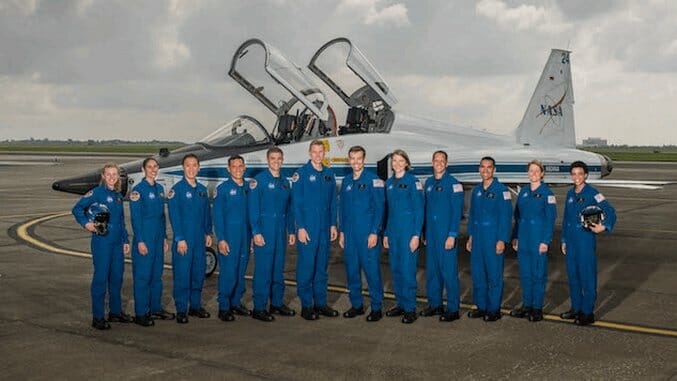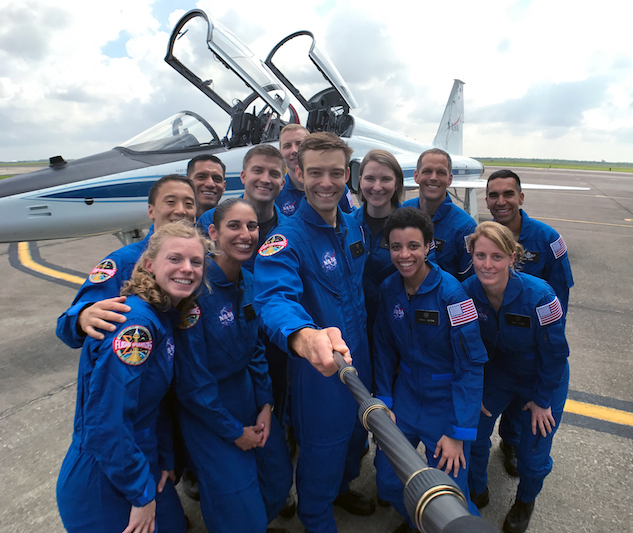Why Is NASA Hiring New Astronauts?

On June 7, 2017, NASA announced a new crop of astronaut candidates, the first since 2013. These 12 people—five of them women, five people of color—are all exceptionally qualified and come from a diverse range of backgrounds and experience. Jonny Kim trained as a Navy SEAL before attending Harvard Medical School. Jessica Watkins has a PhD in geology and worked with the Mars Curiosity team to analyze the pictures and data the rover was sending back. Raja Chari graduated from the U.S. Air Force Academy and the U.S. Naval Test Pilot School. He also has a master’s degree in Aeronautics and Astronautics from MIT.
 NASA’s new astronaut class takes a selfie (Image credit: NASA)
NASA’s new astronaut class takes a selfie (Image credit: NASA)
![]()
It was an announcement that was celebrated around the country. Not only was NASA applauded for selecting such a diverse group of candidates in terms of both experience and background, but it was one of the first concrete reminders in a long time that we still have an astronaut program. If we’re hiring astronauts, the logic goes, surely it’s because we have somewhere to send them?
Well, first, the important thing to remember is that general astronaut training is two years, and this group won’t even start training until August. They’ll be astronaut candidates, instead of full-fledged astronauts, until they complete this training. And keep in mind that this is just the general part; following this intensive training, the astronauts will begin more specialized training tailored to their skills and the missions they may undertake. You may think that being selected for the astronaut program is the hard part (it certainly isn’t easy—these 12 candidates were chosen out of around 18,500 applicants), but it’s definitely not smooth sailing once that hurdle has been overcome.
Astronaut training takes place primarily in Houston, Texas, as Johnson Space Center, though the candidates will travel around the world to complete their training. It consists of multiple different pieces, starting with classroom teaching to learn about systems on the International Space Station and beyond, as well as engineering and space and Earth sciences.
Candidates also train in the Neutral Buoyancy Lab, a giant swimming pool filled with mockups of different systems and spacecraft the astronauts will work with. It’s so difficult to really learn and understand what spending hours, days, and months in weightlessness is like, but in the NBL, astronauts can at least approximate and practice. There will also be flight training, lessons to learn the Russian language and countless other tasks that will immerse each of these 12 AsCans in the astronaut life over the next two years.
-

-

-

-

-

-

-

-

-

-

-

-

-

-

-

-

-

-

-

-

-

-

-

-

-

-

-

-

-

-

-

-

-

-

-

-

-

-

-

-

 A group of Air Force and Coast Guard rescue personnel practice recovery techniques with the Orion capsule at the NBL (Image credit:
A group of Air Force and Coast Guard rescue personnel practice recovery techniques with the Orion capsule at the NBL (Image credit:  A parachute test for the Boeing Starliner (Image credit:
A parachute test for the Boeing Starliner (Image credit: 






































